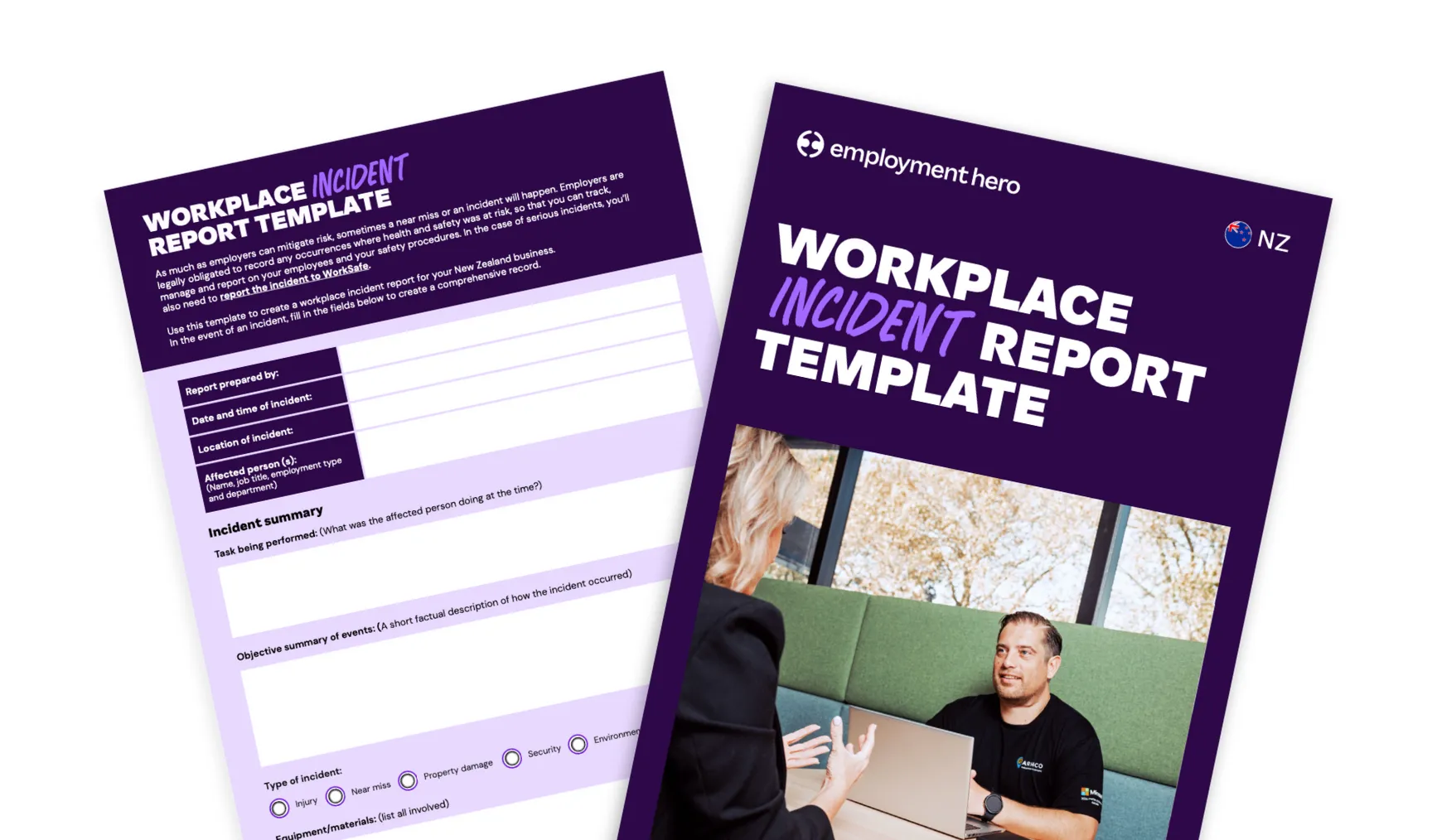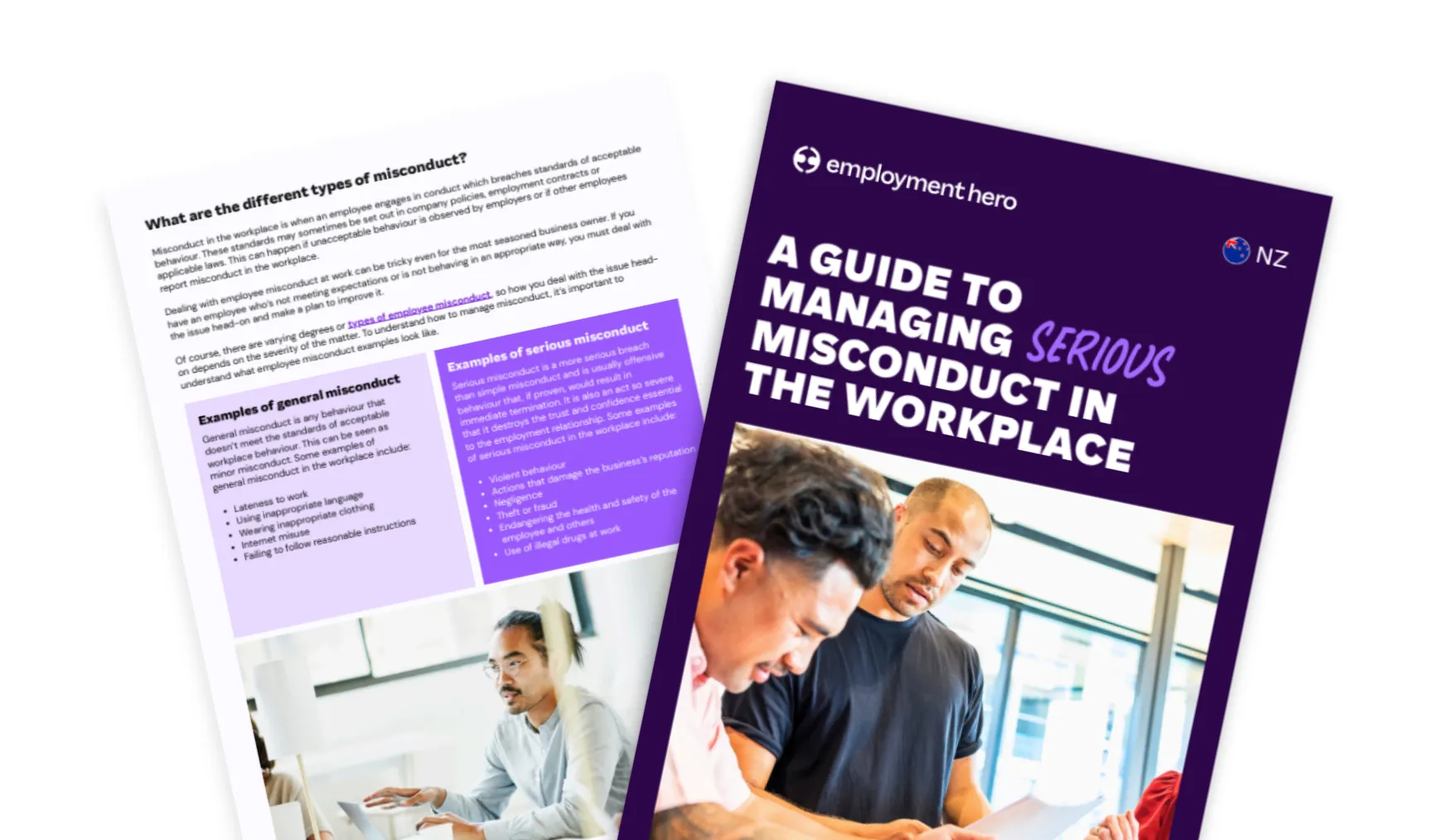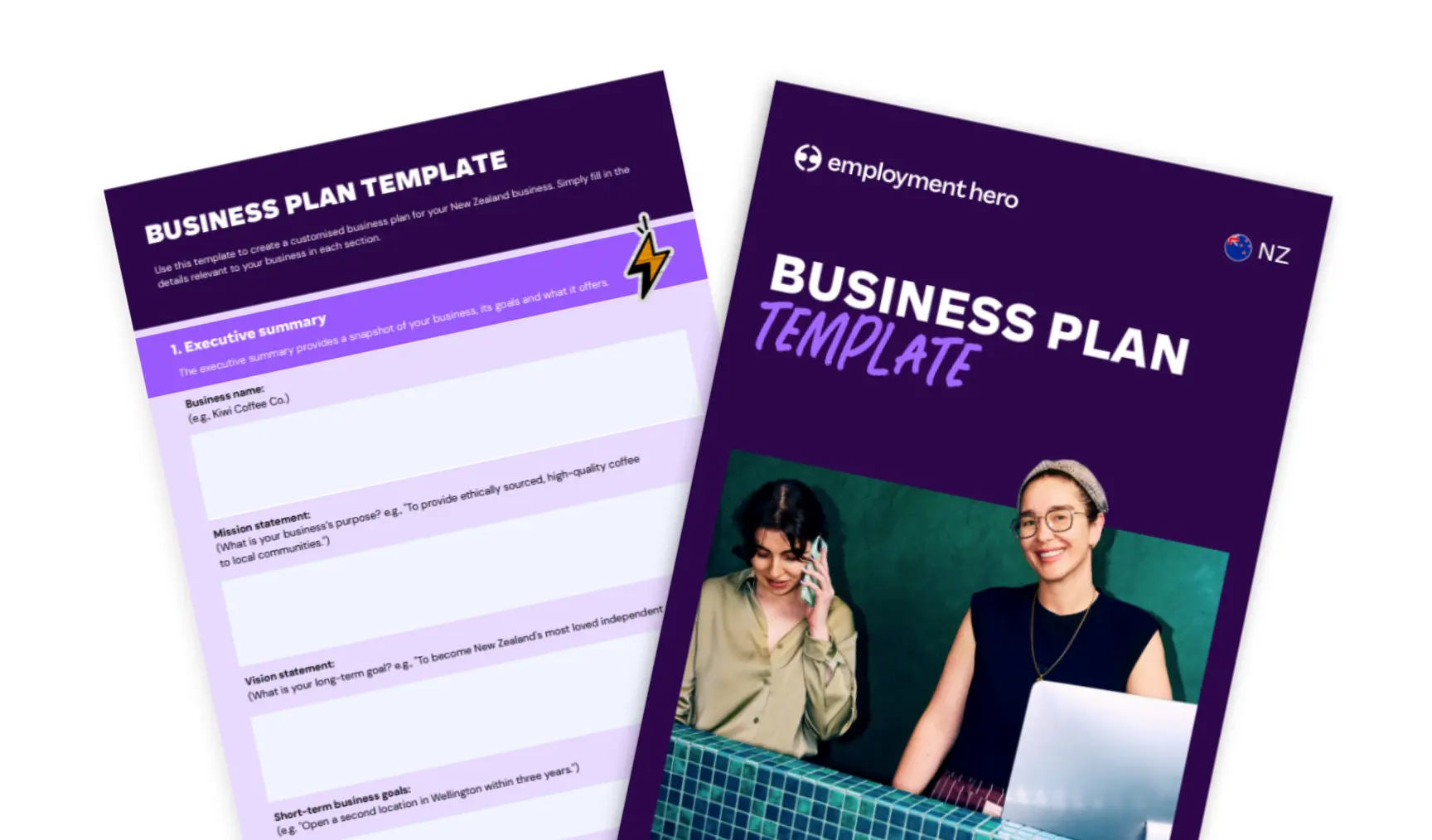Employment Agreement Checklist
Published
Employment Agreement Checklist
Published
Employment agreements are the heart of every employment relationship in New Zealand. They’re a legal imperative, a protection in the event of disputes and a guiding document for all aspects of an employee’s time in your business. Agreements also ensure that both you and your employee are on the same page from their very first day.
There are lots of critical elements that go into an employment agreement. That’s why we’ve created a guide to take you through the process of drafting an employment agreement, as well as a checklist of all the essential information you need to include.
Download the guide and checklist by filling in the form on the right.
What is inside this checklist?
This guide and checklist takes you through the fundamentals of creating and using an employment agreement, including:
- Why is an employment agreement important?
- The key principles of employment agreements in New Zealand
- Common mistakes to avoid as an employer
- Steps to take before you draft your agreement
- Checklist: What to include in your employment agreement
What must every employment agreement include by law?
Every New Zealand employment agreement has to follow guidelines set by the Employment Relations Act 2000. This means including specific information in each agreement.
The legally-required information is:
- Names and details of the employer and employee
- A job description
- Type of employment (e.g. permanent, fixed-term)
- Agreed location of work
- Working hours
- Agreed wage or salary
- The process for resolving employment relationship problems
- That an employee is entitled to time-and-a-half if they work a public holiday
What optional clauses could employers consider adding?
While not mandatory, employers may consider adding several optional clauses to protect their business and manage specific arrangements.
These might include:
- Details of a trial or probationary period
- Provisions for confidentiality
- Reasonable restraint of trade clauses
- Specific arrangements for overtime and extra hours
- Provisions regarding the use of a company vehicle or required uniform
- Terms for study leave
- Clearly defined bonus or incentive terms
- The conditions under which a probation period may be extended.
These clauses must be agreed upon by both parties and must comply with employment law. We’d always advise getting independent legal advice if you’re considering adding additional clauses.

Common employment agreement mistakes to avoid
We do see some common mistakes when drafting employment agreements. One significant error is missing mandatory clauses in the agreement, which is why we’ve made this checklist. Without the correct information, the entire agreement is vulnerable.
Another is misusing different types of employment. It’s critical that employers are aware of the difference between the types and how to use them correctly. For example, fixed-term contracts are only valid if there are genuine, objective reasons for the fixed term (like covering parental leave or a specific project). We’ve seen employers incorrectly use them as a probationary period to test an employee.
There’s also often confusion about the difference between permanent and casual employees. If an employee isn’t working to the conditions of their type of employment, the employer could be at serious risk of legal penalties.
Similarly, be cautious when using additional clauses. For example, a restraint of trade clause must be deemed ‘reasonable’ by Employment New Zealand to be compliant. Employers have been penalised for what have been deemed unreasonably broad restraint clauses.
Why written employment agreements are a legal requirement
It is a fundamental legal requirement in New Zealand for every employee to receive a written employment agreement. This must be provided before the employee starts work, or as soon as possible thereafter.
This is because an agreement establishes a clear record of the rights, duties, and conditions of employment between an employer and employee. It also provides a mutual understanding of expectations, pay, work hours and other crucial terms, which protects both parties by reducing confusion, preventing disputes and ensuring compliance with employment laws.
Failure to provide a written agreement is a breach of the Employment Relations Act 2000 and exposes the employer to significant penalties (usually $1000 per employee). Additionally, the Employment Relations Authority can order penalties of up to $10,000 for an individual employer and up to $20,000 for a corporate body.
Crucially, without a written agreement, the employer may find that certain legal protections and agreed-upon terms are invalid and unenforceable.
When to use fixed‑term, casual or permanent agreements
The agreement should match the type of employment, whether that’s fixed-term, casual or permanent. Different agreements may require additional information.
For example, casual agreements should detail the nature of the employment relationship, how work will be offered and that there’s no obligation for the employer to provide work. For a fixed-term employee, the agreement should include the reason for the fixed-term and the end date of their employment.
Keeping contracts up to date
Employment agreements are living documents that should be reviewed regularly to reflect the current employment relationship and legal environment. Employers should also review agreements when job duties change significantly or the employee receives a promotion or role change.

How to explain agreement changes to employees
When changing an employment agreement, employers should consult the employee and ensure they agree with the changes. Best practice is to issue a clear variation letter that outlines the proposed changes and give the employee a reasonable amount of time to review it. New terms only take effect once the employee has acknowledged and signed the agreement.
How employment agreements support onboarding and performance management
The job description in the employment agreement is a foundational tool for both onboarding and performance management. During onboarding, it sets clear expectations for the role. Subsequently, the job description serves as the benchmark against which performance is measured during probation periods and regular performance reviews.
Retaining signed agreements and compliance documentation
Effective record-keeping practices are essential for legal compliance. Employers must retain copies of every employment agreement and all related documentation (like wage and time records) for a minimum of six years, even after the employment ends. These records should be stored securely and be accessible to the employee upon request.
Employment agreements form the foundation of your employment relationship
Draft up an effective employment agreement with our factsheet and download it today by filling out the form on this page.
The information in this guide is current as at 26 September 2025, and has been prepared by Employment Hero Pty Ltd (ABN 11 160 047 709) and its related bodies corporate (Employment Hero). The views expressed in this guide are general information only, are provided in good faith to assist employers and their employees, and should not be relied on as professional advice. Some information is based on data supplied by third parties. While such data is believed to be accurate, it has not been independently verified and no warranties are given that it is complete, accurate, up to date or fit for the purpose for which it is required. Employment Hero does not accept responsibility for any inaccuracy in such data and is not liable for any loss or damages arising directly or indirectly as a result of reliance on, use of or inability to use any information provided in this guide. You should undertake your own research and seek professional advice before making any decisions or relying on the information in this guide.
Download the checklist by filling in the form on the right.
Register for downloadable
Related Resources
-
 Read more: Incident report template NZ: free download for businesses
Read more: Incident report template NZ: free download for businessesIncident report template NZ: free download for businesses
Download our free NZ incident report template. Record and report workplace incidents correctly under HSWA and ACC requirements.
-
 Read more: Serious misconduct in New Zealand: What employers must know
Read more: Serious misconduct in New Zealand: What employers must knowSerious misconduct in New Zealand: What employers must know
Learn what serious misconduct means under NZ law, common examples, and how to manage the process legally and fairly. Protect…
-
 Read more: Free business plan template for New Zealand business owners
Read more: Free business plan template for New Zealand business ownersFree business plan template for New Zealand business owners
Published Published Starting and running a business is a journey that needs direction. That’s why a well-crafted business plan is…





















